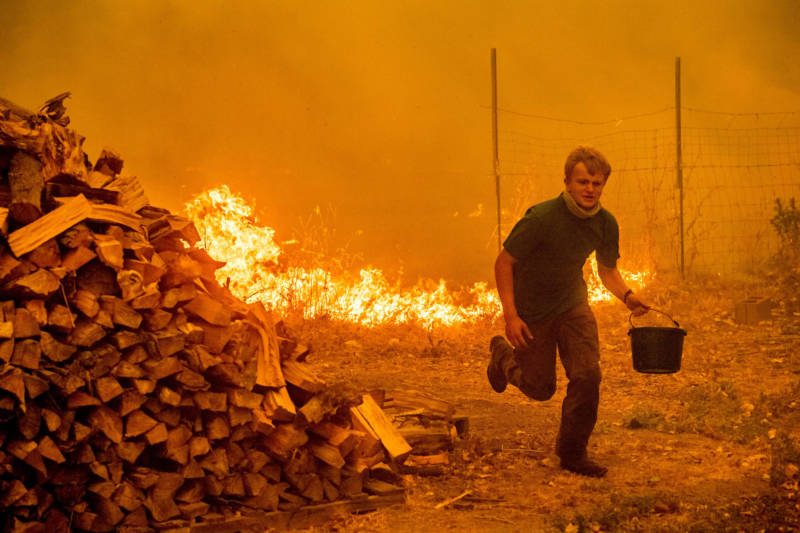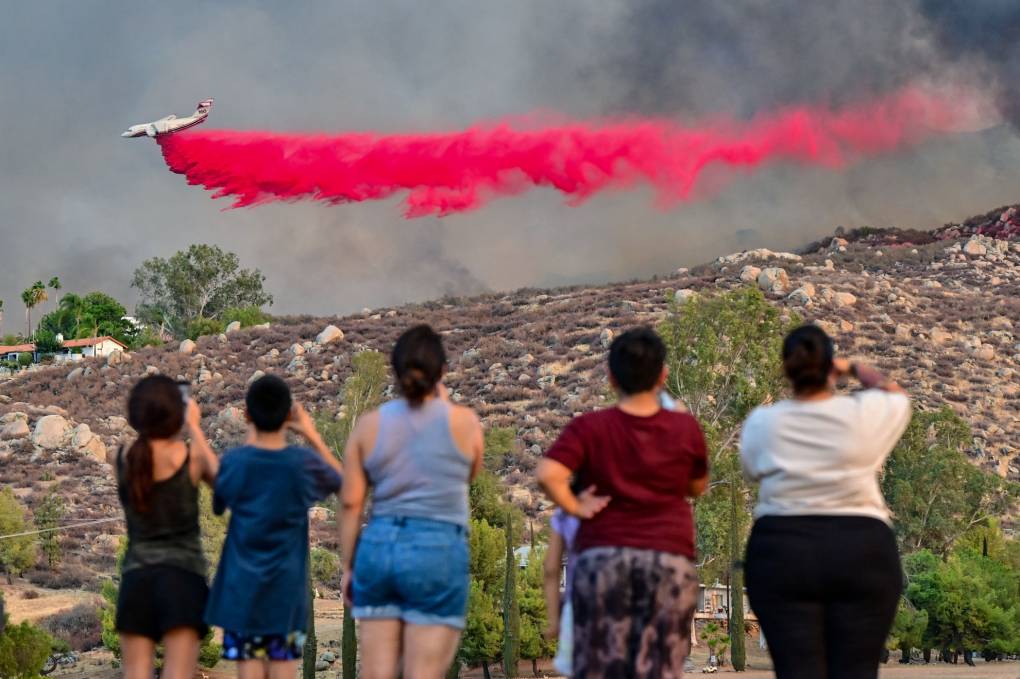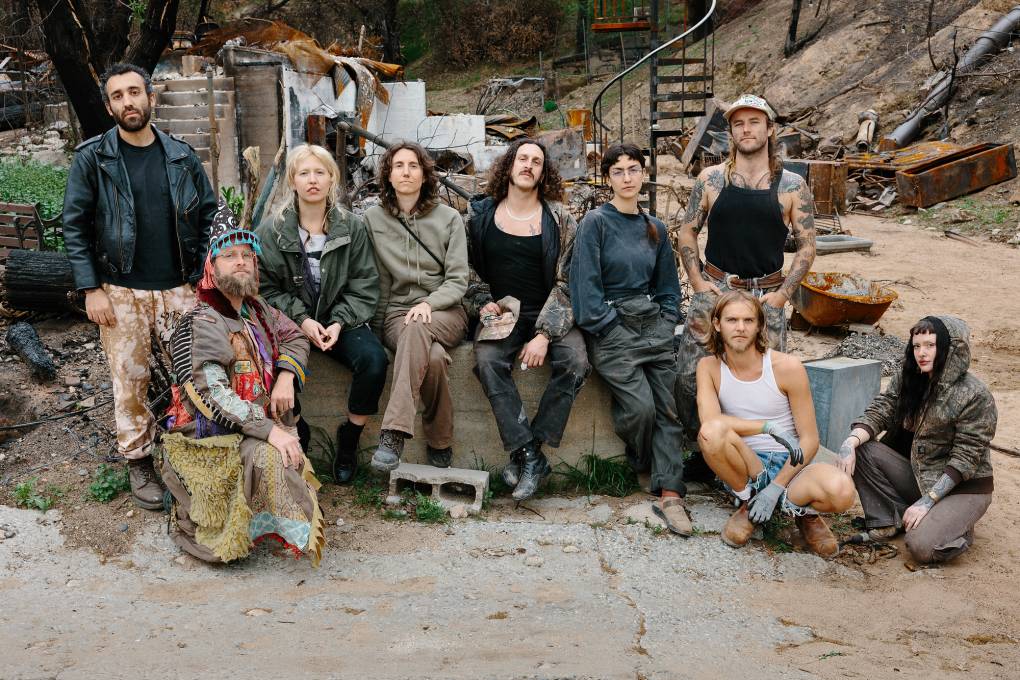The man told investigators that "as quickly as he could," he drove the stake about a foot into the ground, blocking the hole.
But "while hammering the stake, he smelled smoke," the Cal Fire report says. "He said he looked down, directly behind him, and saw the vegetation fire he described as 2 feet by 2 feet in size."
The rancher said he made a series of frantic attempts to stop the fire from spreading.
He said he grabbed a shovel to try to extinguish the flames, but the ground was so hard he couldn't scrape up enough dirt to have an effect. He then tried to smother the fire with a rug and trampoline lying nearby, but the trampoline caught fire.
Next, he grabbed a plastic hose next to the water tanks. But heat from the fire had already caused a kink in the line, and he lost water pressure.
He also tried to break a water line from the tanks and direct the resulting flow at the escaping blaze, but again didn't have enough water pressure to stop the flames.
Finally, he said, he got in his four-wheeled utility vehicle and tried to drive ahead of the fire and "kick up dirt" to stop it. That effort came to an end when he lost control of the vehicle and crashed.
He told investigators that at that point he ran to his residence and phoned Cal Fire to respond to the blaze, which he believed covered about an acre as it spread up the hillside from the water tanks.
Cal Fire investigators recovered the hammer, stake and metal fragments from the site of the fire's ignition. The agency's report says all other possible causes for the fire were eliminated.
The Ranch Fire took nearly two months to contain and eventually burned 410,203 acres -- 640 square miles. The Mendocino Complex Fire, which included the Ranch blaze and the nearby River Fire -- burned a total of 459,123 acres and ranks as the largest fire by land area in state history.
One firefighter died battling the blaze —- killed by a tree snapped by a low-altitude fire retardant drop. Three other firefighters were injured. In all, the Mendocino Complex destroyed a total of 280 structures, including 157 residences.
The total cost of fighting the two fires has been estimated at more than $200 million.



